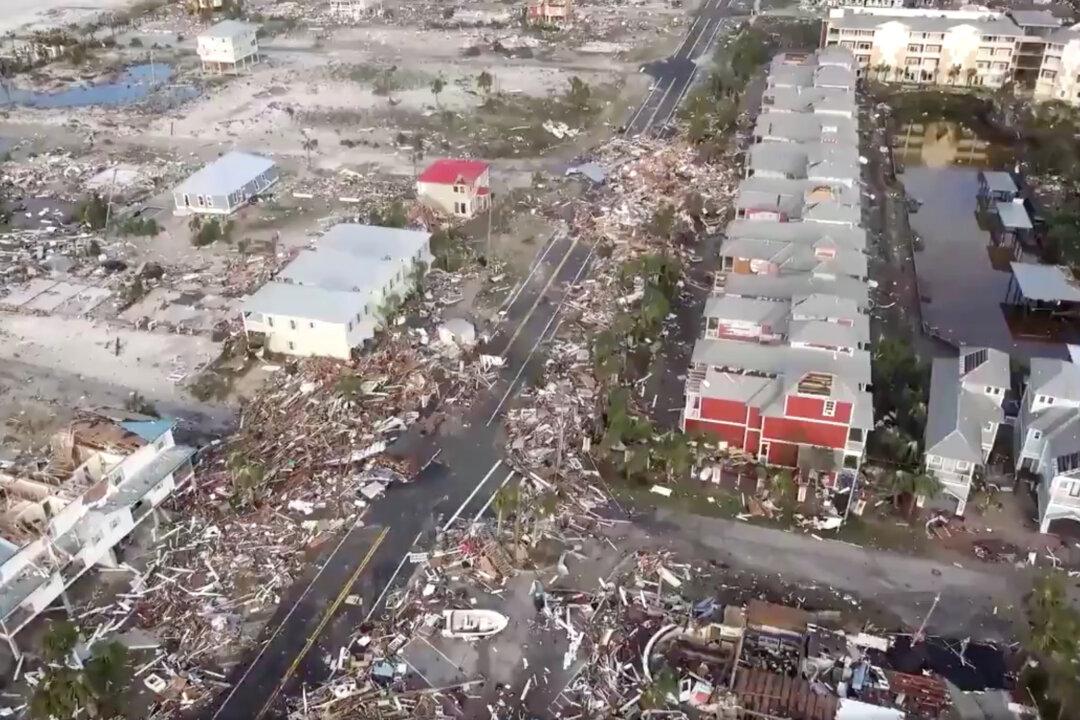PANAMA CITY BEACH, Fla.—A lack of power and phone service in the areas of Florida flattened by Hurricane Michael last week was hindering efforts on Oct. 17 to distribute food and water and to contact residents not heard from since the storm plowed through the state’s Panhandle.
The hurricane, one of the most powerful storms on record to hit the continental United States, killed at least 30 people, according to county officials. It packed top sustained winds of 155 miles per hour that toppled power lines and unleashed a surge of seawater that demolished homes.





